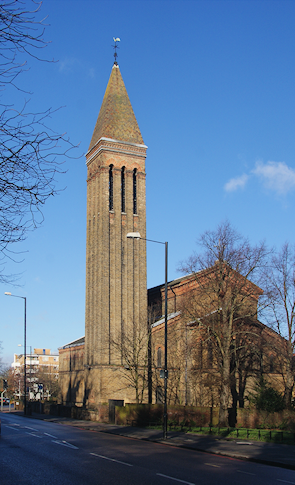Streatham
Streatham, Lambeth
An extensive south London suburb stretching southwards from Brixton to Norbury

Streatham was first verifiably recorded in Domesday Book – as Estreham, but this is likely to have been a transcription error as the name simply means ‘street ham’, a reference to a small settlement beside the Roman road. St Leonard’s church gained its own parish in 1291 and was rebuilt in the 14th century; it has since been almost totally rebuilt again.
The estate of Streatham was part of the manor of Tooting Bec in the Middle Ages, when more hamlets grew up at separate points along the road. After the Reformation and as the woodland was cleared the district was broken up into several farms and some of the landowners began to sell these off in the 18th century. Given Streatham’s remoteness from London, most of the houses built at this time served as country retreats and the most important of these was the Thrale family’s home at Streatham Park.
The first suburban dwellings appeared at the northern edge of the district in the 1830s, on Streatham Hill and soon afterwards in Roupell Park. The spiritual needs of the new residents were met by Christ Church, which was built in 1840–2 by James Wild, with interior decoration by Owen Jones. This grade I‑listed church now finds itself located on a stretch of the South Circular Road.
Full suburbanisation began after the opening of railway stations in the mid-19th century and the process reached a peak between 1880 and 1914, when the parish’s cottages, mansions and fields were erased by a series of estates. The High Road and Streatham Hill became a major shopping centre and, after the First World War, an entertainment zone too. The Astoria cinema (now Odeon) opened in 1930, followed in 1934 by Streatham baths and ice rink (now Streatham ice and leisure centre).
The muddy south-west corner known originally as Lower Streatham was the last part of the district to be built up, whereupon it was renamed Streatham Vale.
By the mid-1930s Wandsworth council – which was then responsible for this area – had built blocks of flats at several locations across the district and municipal building accelerated after the Second World War.
The amenities of Streatham Hill and High Road struggled to recover from the depression of the 1980s, after which the John Lewis Partnership closed its department store here. In a 2002 poll, BBC radio listeners voted the High Road “Britain’s worst street … with its increasingly high level of violent crime.” Nowadays it’s perfectly pleasant most of the time, though not the superior shopping destination it once was.
In the latter decades of the 20th century Streatham gained a multi-ethnic population; 37 per cent of residents are now of white British descent. The next largest minorities, each representing 9 per cent of the total, are of Caribbean and African heritage.
Cynthia Payne, whose story was filmed as Personal Services, ran an unconventional brothel at her home in Ambleside Avenue, next door to the home of composer/conductor Carl Davies.
Former mayor of London Ken Livingstone was born in Shrubbery Road, while Streatham’s best-known contemporary daughter is the supermodel Naomi Campbell.
